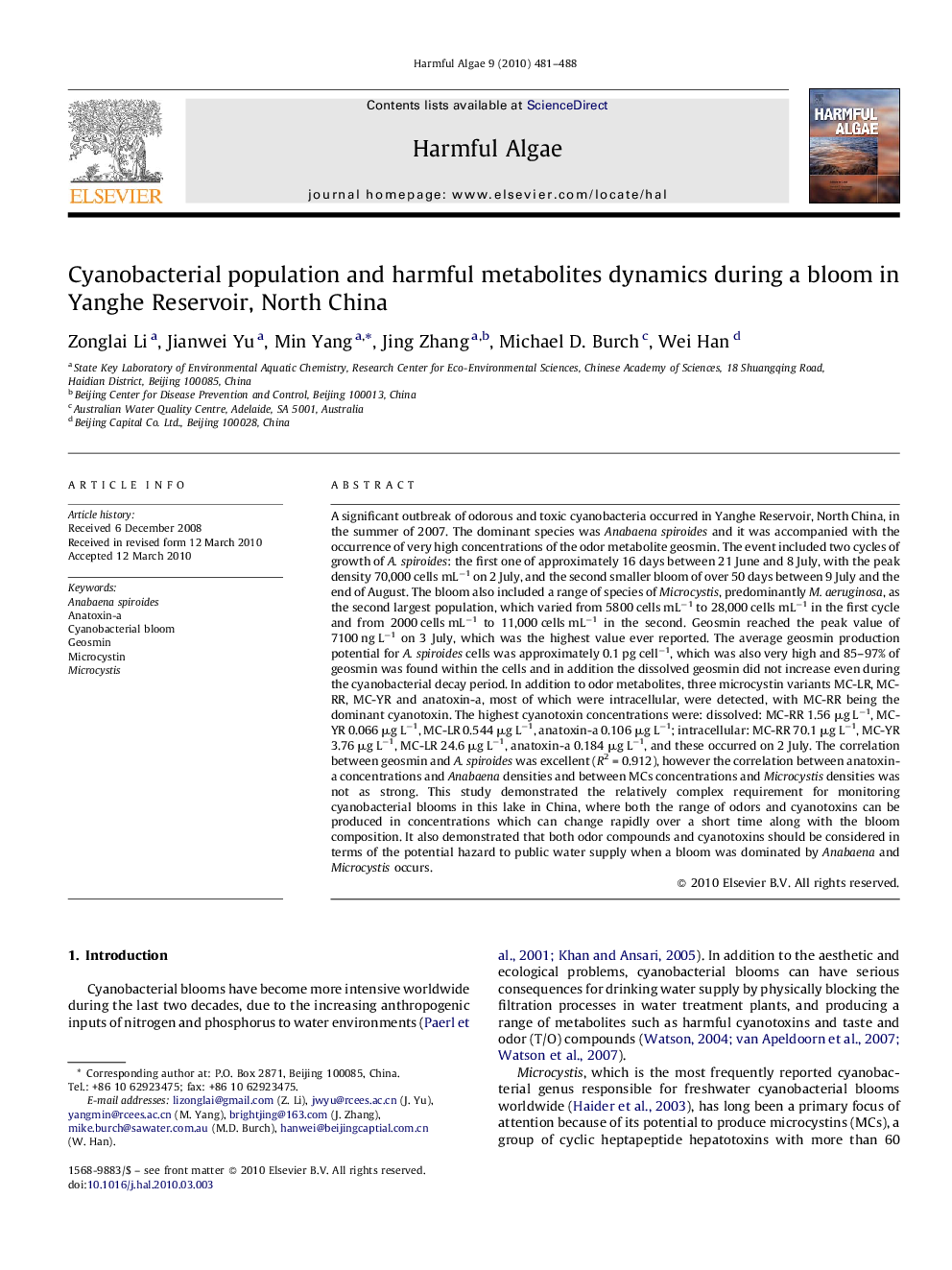| Article ID | Journal | Published Year | Pages | File Type |
|---|---|---|---|---|
| 4545761 | Harmful Algae | 2010 | 8 Pages |
A significant outbreak of odorous and toxic cyanobacteria occurred in Yanghe Reservoir, North China, in the summer of 2007. The dominant species was Anabaena spiroides and it was accompanied with the occurrence of very high concentrations of the odor metabolite geosmin. The event included two cycles of growth of A. spiroides: the first one of approximately 16 days between 21 June and 8 July, with the peak density 70,000 cells mL−1 on 2 July, and the second smaller bloom of over 50 days between 9 July and the end of August. The bloom also included a range of species of Microcystis, predominantly M. aeruginosa, as the second largest population, which varied from 5800 cells mL−1 to 28,000 cells mL−1 in the first cycle and from 2000 cells mL−1 to 11,000 cells mL−1 in the second. Geosmin reached the peak value of 7100 ng L−1 on 3 July, which was the highest value ever reported. The average geosmin production potential for A. spiroides cells was approximately 0.1 pg cell−1, which was also very high and 85–97% of geosmin was found within the cells and in addition the dissolved geosmin did not increase even during the cyanobacterial decay period. In addition to odor metabolites, three microcystin variants MC-LR, MC-RR, MC-YR and anatoxin-a, most of which were intracellular, were detected, with MC-RR being the dominant cyanotoxin. The highest cyanotoxin concentrations were: dissolved: MC-RR 1.56 μg L−1, MC-YR 0.066 μg L−1, MC-LR 0.544 μg L−1, anatoxin-a 0.106 μg L−1; intracellular: MC-RR 70.1 μg L−1, MC-YR 3.76 μg L−1, MC-LR 24.6 μg L−1, anatoxin-a 0.184 μg L−1, and these occurred on 2 July. The correlation between geosmin and A. spiroides was excellent (R2 = 0.912), however the correlation between anatoxin-a concentrations and Anabaena densities and between MCs concentrations and Microcystis densities was not as strong. This study demonstrated the relatively complex requirement for monitoring cyanobacterial blooms in this lake in China, where both the range of odors and cyanotoxins can be produced in concentrations which can change rapidly over a short time along with the bloom composition. It also demonstrated that both odor compounds and cyanotoxins should be considered in terms of the potential hazard to public water supply when a bloom was dominated by Anabaena and Microcystis occurs.
